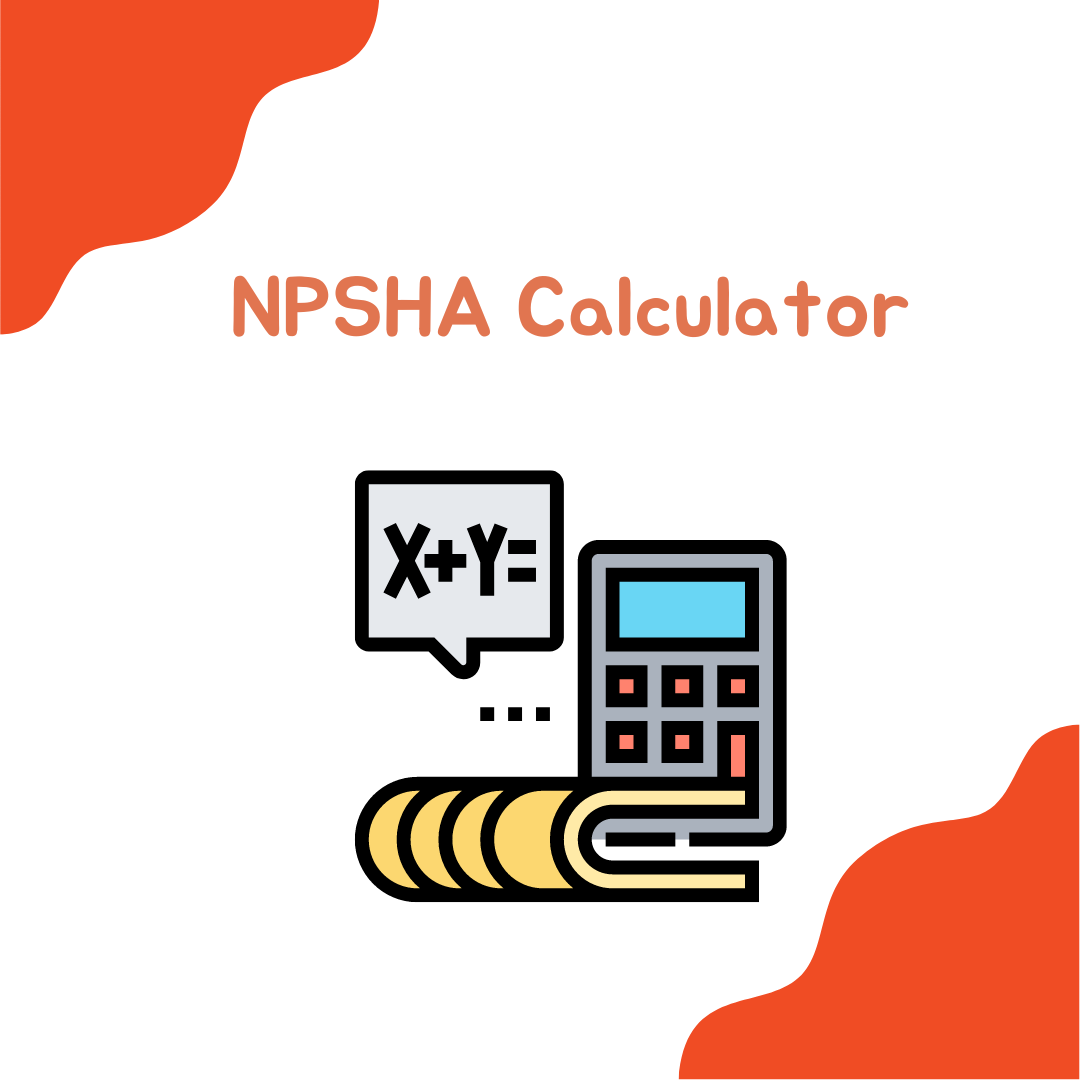NPSHA Calculator
NPSHA Calculator - Vapor Pressure and Static Head
The NPSHA Calculator is a vital tool used in the field of fluid mechanics and engineering to determine the suction capability of a pump or a system. NPSHA refers to the absolute pressure of the fluid at the pump’s inlet, corrected for the effects of vapor pressure and static head. It measures the energy available at the pump’s inlet to prevent cavitation, a phenomenon that can cause significant damage to the pump and reduce its efficiency.

Pump's Inlet to Prevent Cavitation
Cavitation occurs when the pressure is at the pump. These collapsing bubbles create shockwaves that erode the pump impeller and other components, leading to reduced performance, increased maintenance costs, and potential pump failure.
The formula for calculating Net Positive Suction Head Available
NPSHA = (P_inlet + Patm) – (P_vapor + H_static + H_friction)
Where:
– P_inlet is the pressure at the pump inlet (psia or Pa).
– Patm is the atmospheric pressure (psi or Pa).
– P_vapor is the fluid’s vapour pressure at the given temperature (psia or Pa).
– H_static is the static head from the fluid level to the pump centerline (feet or meters).
– H_friction is the frictional losses in the suction line (feet or meters).
If the NPSHA value exceeds the Net Positive Suction Head Required (NPSHR) value of the pump, the pump will operate without cavitation. However, if the NPSHA value is less than the NPSHR value, the pump may experience cavitation, leading to various issues.
| Parameter | Symbol | Value |
|---|---|---|
| Absolute Pressure (P1) | P1 | |
| Liquid Density | Pg | |
| Liquid Surface Height | H1 | |
| Head Loss in Suction Line | Hf | |
| Liquid Velocity at Nozzle | V1 | |
| Acceleration due to Gravity | g | 9.81 |
Net Positive Suction Head Available Calculator Considers Several Factors
The NPSHA calculations consider several factors to assess the NPSHA value precisely. These factors typically include:
Pressure at the Pump Inlet:
The actual pressure at the pump’s inlet is measured relative to the reference point.
Vapor Pressure of the Fluid:
Every fluid has a vapour pressure at a specific temperature. Cavitation can occur if the pressure at the pump inlet falls below this vapour pressure.
Liquid Level:
The distance from the fluid level to the pump centerline, also known as the static head, affects the NPSHA value.
Frictional Losses:
Any pressure drop experienced in the suction line or due to fittings and valves is considered.
Elevations:
Changes in elevation from the fluid source to the pump’s inlet are considered as part of the NPSHA calculation.
Interpretation of NPSHA
- If NPSHA > NPSHR: The pump is adequately primed and unlikely to experience cavitation.
- If NPSHA < NPSHR: Cavitation may occur, leading to pump damage and reduced performance. Steps should be taken to increase NPSHA.
Additional factors may need to be considered for a comprehensive pump system analysis. Always consult pump manufacturers’ data and engineering professionals for critical applications.
Reducing frictional losses, or lowering the pump's operating speed
To prevent cavitation and ensure the pump operates efficiently, engineers and operators use the Calculator to analyze the system design and make adjustments, such as altering pipe sizes, reducing frictional losses, or lowering the pump’s operating speed.
Overall, the Calculator is a valuable tool that helps engineers and operators understand and mitigate the risks associated with cavitation, thereby improving the reliability and performance of pump systems in a wide range of applications.


